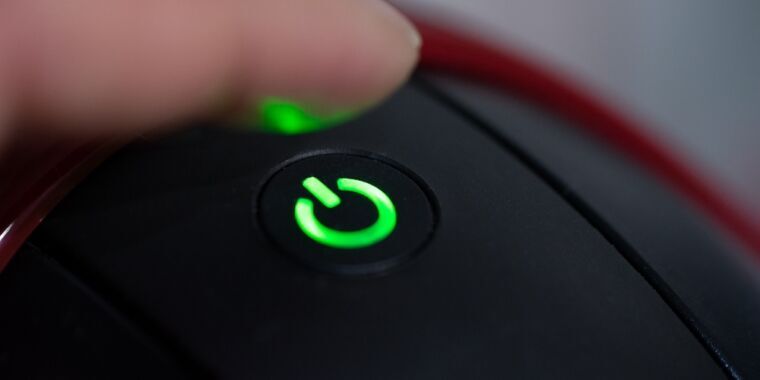Just about every Windows and Linux device vulnerable to new LogoFAIL firmware attack::UEFIs booting Windows and Linux devices can be hacked by malicious logo images.
Every device booting from UEFI is vulnerable. It’s neither a Windows nor Linux issue, it’s UEFI.
Because UEFI has Code-execution capability before OS loads. In this case it’s for the logo
It’s not related to Windows or Linux, but as the article notes, Apple devices that use UEFI are not vulnerable (and current ones don’t use it anymore and therefore aren’t vulnerable either), so I guess that’s where the “Windows or Linux” comes from.
And I can install FreeBSD or OpenBSD on a non-Apple machine, and it will have the same security issue.
The article is written inaccurately. The issue is that the industry-standard pre-OS-load firmware patterns and interfaces (BIOS/EFI/UEFI) are vulnerable. Apple uses nonstandard/highly customized hardware, firmware, and software (because they’re more or less completely vertically integrated), and their custom stuff doesn’t have the same flaw due to that customization.
There are more OS’ on PC then Windows and Linux. So they should really just say PCs running UEFI. Any PC running a different firmware like core boot or libreboot is not affected. Apple devices are not vulnerable because they don’t use UEFI. Apple doesn’t do the U(nified) bit and built their own EFI.
different firmware like core boot or libreboot
What’s the market share of these? Are they even relevant?
Depends, definitely not in the consumer market. But coreboot is widely used in appliances. Have a look at the boards from pcengines.
No. He just wants to be over technical.
Can anyone explain to me if this is an actual risk outside a highly controlled environment? AFAIK, it’s a pretty non-casual thing to change the UEFI boot logo, so wouldn’t that make this pretty hard to actually pull off?
The article quoted the researchers who indicated it can be done with remote access by using other attack vectors. This is because most UEFI systems store the logo on disk in the EFI system partition. It doesn’t need to do anything crazy like compile and flash a modified firmware. All it needs to do is overwrite the logo file on disk.
If you have access to directly write to arbitrary disk locations you already have full control. Why bother with overwriting the logo file with a malicious payload if you can just overwrite the actual kernel…
Because this can persist beyond an OS rebuild or patch. You infect the BIOS and you’re on the device until the BIOS is free reflashed. And who ever does that?
Or until you overwrite that malicious logo again?
No. The logo is loaded, runs in BIOS context and is able to modify the BIOS. Now it’s embedded and the logo is irrelevant.
Due to Secure Boot (if it actually enabled since there are some bogous implementations) this can be prevented. If I understand it correctly, LogoFAIL bypasses this security measure and enables loading unsigned code.
This is what I’m wondering
Ah, that’s much easier than I thought. I guess I’m horrible out of date on my “messing with BIOS” knowledge
If it’s on the disk, why doesn’t the image get removed when I erase all partitions? Does the firmware put it back?
If I’m understanding this correctly this isn’t necessarily the very first logo that would appear but one that appears as the firmware starts to boot an OS from the EFI system partition. So technically installing your OS puts the original non-malicious logo there.
It does, but if it has compromised the BIOS before that, that won’t get wiped.
I want my computer to run an open-source BIOS/UEFI but the set of systems supported by projects like Libreboot is unfortunately rather limited.
You want your BIOS WITHOUT NSA BACKDOOR?!! HAHAHAHAHA
Why is it so limmitted? Whats the bottleneck?
Each board has to be added manually, I presume they all have intricacies around initialising hardware and it seems most of that is kept in binary blobs and I don’t really understand I just wish it was like openwrt and worked anywhere
Another instance of Let’s replace something that’s been working for ages with something worse but shiny.
What are you going on about?
Do you mean BIOS versus UEFI? That ship sailed over a decade ago. And I don’t think anyone actually believes that plain BIOS is superior in any way to UEFI.
That ship sailed over a decade ago.
And yet we’re still having this kind of bullshit.
Plain BIOS got the job done.
Can’t get hacked by this if you never reboot!
Click bait.
UEFI is such a disaster. I still sometimes use legacy boot and notice that I miss none of the features UEFI gives me. And still I go for UEFI because it’s shiny and new. Guess I’m a disaster too.
It is legacy boot MODE inside UEFI. Turning this thing on does nothing in regard to the exploit.
Weeellll, shit. Thanks for the info.
This is the best summary I could come up with:
Hundreds of Windows and Linux computer models from virtually all hardware makers are vulnerable to a new attack that executes malicious firmware early in the boot-up sequence, a feat that allows infections that are nearly impossible to detect or remove using current defense mechanisms.
The attack—dubbed LogoFAIL by the researchers who devised it—is notable for the relative ease in carrying it out, the breadth of both consumer- and enterprise-grade models that are susceptible, and the high level of control it gains over them.
LogoFAIL is a constellation of two dozen newly discovered vulnerabilities that have lurked for years, if not decades, in Unified Extensible Firmware Interfaces responsible for booting modern devices that run Windows or Linux.
The participating companies comprise nearly the entirety of the x64 and ARM CPU ecosystem, starting with UEFI suppliers AMI, Insyde, and Phoenix (sometimes still called IBVs or independent BIOS vendors); device manufacturers such as Lenovo, Dell, and HP; and the makers of the CPUs that go inside the devices, usually Intel, AMD or designers of ARM CPUs.
As its name suggests, LogoFAIL involves logos, specifically those of the hardware seller that are displayed on the device screen early in the boot process, while the UEFI is still running.
LogoFAIL is a newly discovered set of high-impact security vulnerabilities affecting different image parsing libraries used in the system firmware by various vendors during the device boot process.
The original article contains 663 words, the summary contains 232 words. Saved 65%. I’m a bot and I’m open source!










